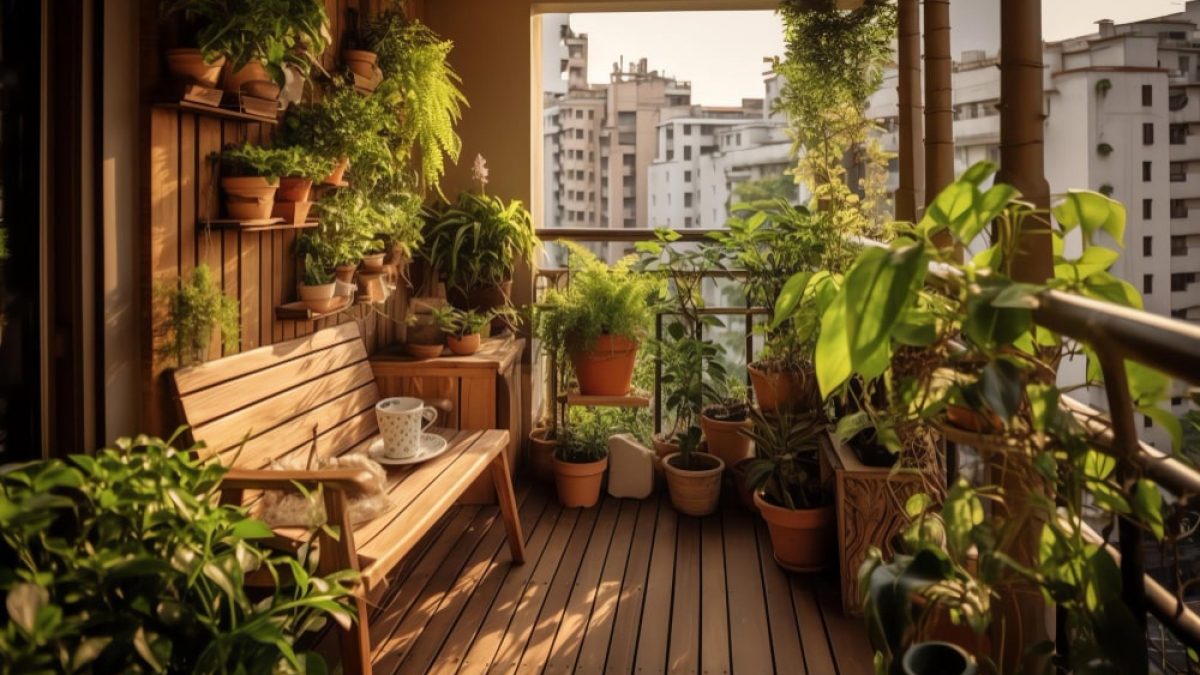In the bustling heart of the city, where space is a coveted commodity, a growing trend is emerging—transforming small living spaces into lush retreats that defy the constraints of urban living. As urban dwellers face the challenge of limited square footage, the desire for a connection with nature has sparked a creative movement towards cultivating miniature urban oases within the confines of their homes. In these compact apartments and cozy condos, a green revolution is taking place.
Gone are the days when the concrete jungle dominated the cityscape; now, residents are embracing the idea of weaving nature seamlessly into their living spaces. The concept of an urban oasis goes beyond merely adorning windowsills with potted plants. It’s about ingeniously incorporating greenery into every nook and cranny, turning seemingly insignificant corners into vibrant pockets of life. Walls adorned with hanging gardens, shelves housing an array of succulents, and even ceilings adorned with cascading vines—all contribute to the transformation of small spaces into verdant sanctuaries.
The key to this transformation lies in the careful selection of plants that thrive in indoor environments. Low-maintenance greenery, such as snake plants, pothos, and spider plants, are becoming staples in these urban oases, offering both aesthetic appeal and ease of care. Vertical gardens, utilizing wall-mounted planters or modular systems, are gaining popularity as a practical solution for those with limited floor space, allowing inhabitants to surround themselves with lush foliage without sacrificing valuable square footage.
Lighting also plays a crucial role in creating the illusion of a thriving ecosystem within the confines of city living. As natural sunlight may be limited, innovative lighting solutions, such as full-spectrum LED lights, are employed to mimic the sun’s rays and support the photosynthetic needs of indoor plants. The careful balance of light, water, and nutrient-rich soil fosters an environment where greenery not only survives but thrives, creating an immersive experience for residents seeking solace in the midst of urban chaos.
Beyond the aesthetic appeal, these urban oases contribute to the well-being of city dwellers in multiple ways. Numerous studies have highlighted the positive impact of indoor plants on mental health, reducing stress and enhancing overall happiness. The act of nurturing and caring for plants also fosters a sense of responsibility and connection with the natural world—a valuable counterbalance to the fast-paced, often detached nature of city living.
In the quest to transform small spaces into lush retreats, sustainability is a driving force. Many urban dwellers are adopting eco-friendly practices, choosing locally sourced and repurposed materials for planters, and exploring water-saving irrigation systems. The commitment to environmental consciousness extends beyond the interior, with some even incorporating outdoor balcony spaces into their urban oases, further blurring the boundaries between the concrete city and the natural world.
The transformation of small spaces into lush retreats in the heart of the city is a testament to the resilience and creativity of urban dwellers. It is a movement that celebrates the harmonious coexistence of modern living and the natural world, proving that even in the midst of urban challenges, the desire for greenery, tranquility, and connection to nature can flourish and thrive. As the trend continues to grow, these urban oases stand as vibrant symbols of a city culture that values not only innovation and progress but also the essential bond between humans and the natural environment.


